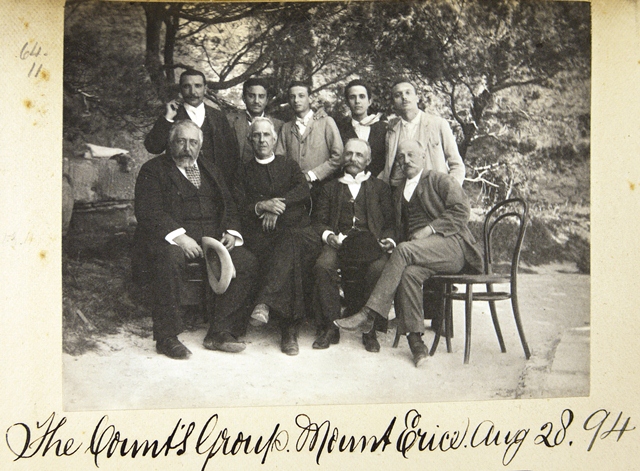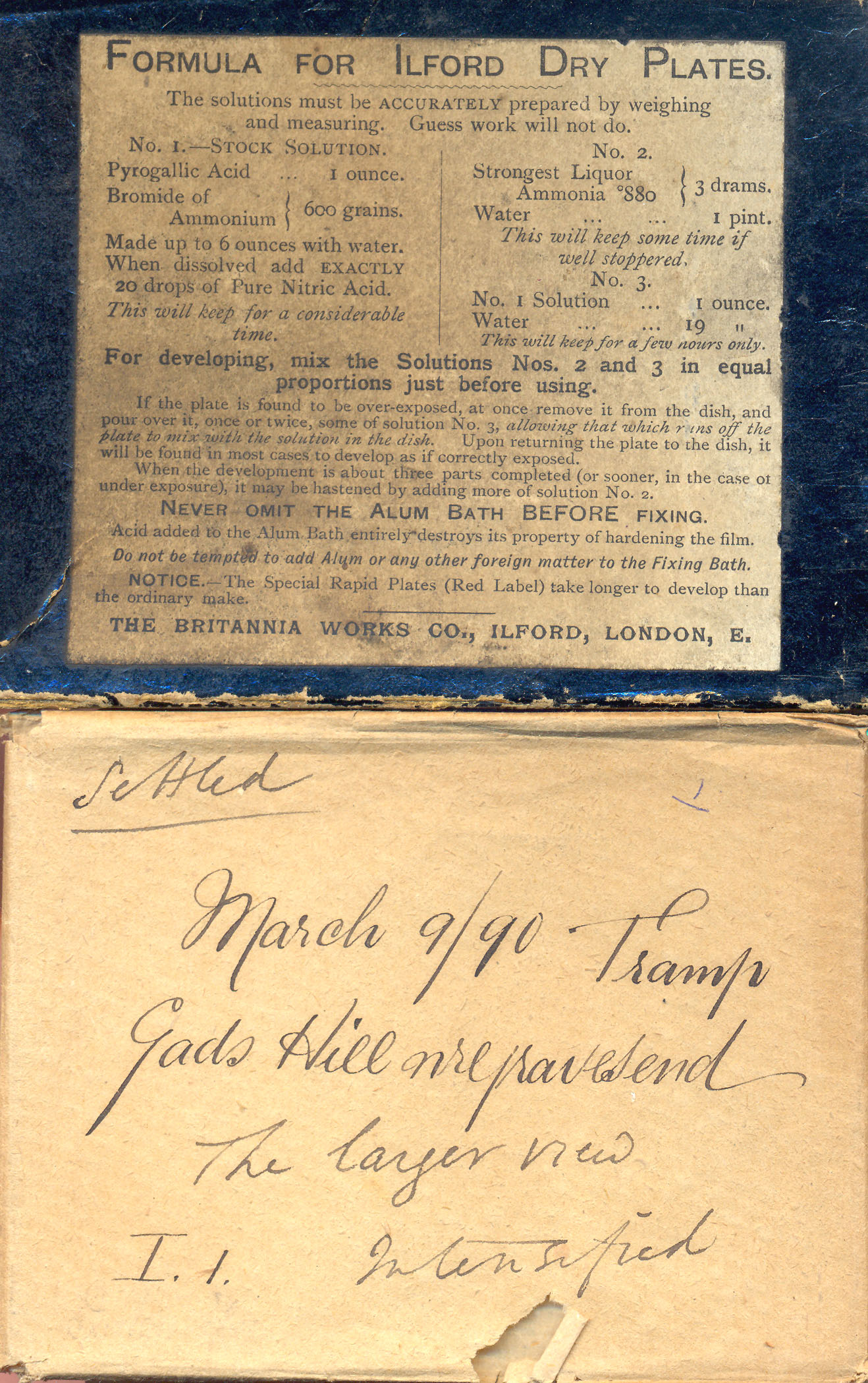Month 14 (August 2012)
This month I have been mostly… Assessing the negatives
In the 1880s and 1890s, Butler proved himself a prolific and highly skilled amateur photographer. At this time, photographic ‘dry plates’ had just replaced ‘collodion wet plates’ as a staple piece of photographic equipment. Dry plates are thin glass plates prepared with a light-sensitive emulsion of silver halides suspended in gelatin, on which a negative image forms when exposed to light. Being pre-prepared, the invention of dry plates enabled photographers to work more freely outside, and to travel with their negatives before developing them – making ‘snapshot’ photography possible for the first time. Samuel Butler’s snapshots provide some of the best early examples of this method.
Scan of a glass plate negative (D64.11)
Assisted by his friend Alfred Cathie, Butler developed and printed all of his own photographs, and the Library holds five magnificent albums (containing a total of about 1700 black and white prints) of Butler’s ‘snapshots’ – most of which are dated and labelled in Alfred’s neat hand. Housed in their albums, the images are easy to retrieve for researchers and display in exhibitions. They’re also easy to photograph if we want to reproduce the images digitally.

The positive print - Album 4, page 3 (1894)
The original dry plate negatives are less easy to manage. St John’s possesses about 1500 of Butler’s, which are the equivalent of ‘raw image files’ for his photographs. Being made of glass, these are very fragile. They’re also composed of, and covered in, century-old chemicals, which make their condition unstable and the images prone to deterioration and fading. To preserve the images, the plates are currently being digitized using special scanning and photographic equipment, and the digital copies stored on discs. This work has been carried out externally over a number of years, and we’re now aiming to complete it before the end of the Butler Project – so I’ve had to go through lots of old files to ascertain what’s been done up to now and what’s still to do, and make sure the newer digital files are correctly cross-referenced with the earlier documentation of the physical material. [See Month 24 for an update.]

Original box and envelope for one of Butler's dry plates
P.S. The Samuel Butler Project is now on Facebook!